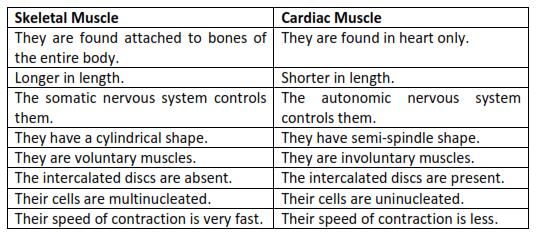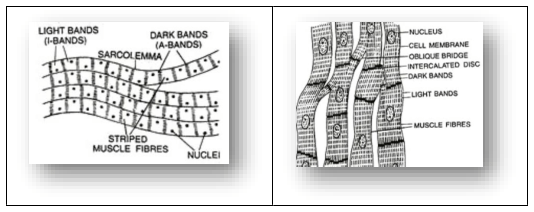
NCERT Solutions for Class 11 Biology chapter 20 Locomotion and Movement PDF
Hey, are you a class 11 student and looking for ways to download NCERT Solutions for Class 11 Biology chapter 20 Locomotion and Movement PDF? If yes. Then read this post till the end.In this article, we have listed NCERT Solutions for Class 11 Biology chapter 20 Locomotion and Movement PDF that are prepared by Kota’s top Doctor’s Faculties by keeping Simplicity in mind.
If you want to learn and understand class 11 Biology chapter 20 "Locomotion and Movement" in an easy way then you can use these solutions PDF.
NCERT Solutions helps students to Practice important concepts of subjects easily. Class 11 Biology solutions provide detailed explanations of all the NCERT questions that students can use to clear their doubts instantly.
If you want to score high in your class 11 Biology Exam then it is very important for you to have a good knowledge of all the important topics, so to learn and practice those topics you can use eSaral NCERT Solutions.
In this article, we have listed NCERT Solutions for Class 11 Biology chapter 20 Locomotion and Movement PDF that you can download to start your preparations anytime.
So, without wasting more time Let’s start.
Download NCERT Solutions for Class 11 Biology chapter 20 Locomotion and Movement PDF
Question 1. Draw the diagram of a sarcomere of skeletal muscle showing different regions.
Solution.

Figure: Sarcomere of skeletal muscle
Question 2. Define sliding filament theory of muscle contraction.
Solution. Sliding filament theory is a mechanism of muscle contraction in which the myosin and actin filaments of striated muscle slide over each other to shorten the length of the muscle fibres.
[Note: When calcium ions bind to troponin molecules on the actin filaments, myosinbinding sites on the actin filaments are exposed. This forms a bridge between actin and
myosin, which requires ATP as an energy source. Hydrolysis of ATP in the heads of the myosin molecules causes the heads to change shape and bind to the actin filaments. The release of ADP from the myosin heads causes a further change in shape and generates mechanical energy that causes the actin and myosin filaments to slide over one another.]
Question 3. Describe the important steps in muscle contraction.
Solution. The process of muscular contraction occurs in four important steps:
i. Depolarisation and calcium ion release
ii. Actin and myosin cross-bridge formation
iii. Sliding mechanism of actin and myosin filaments
iv. Sarcomere shortening (muscle contraction)
i. Depolarisation and calcium ion release:
- Central nervous system (CNS) via a motor neuron sends a signal for muscle contraction.
- A motor neuron, along with its connected muscle fibres constitutes a motor unit. The junction between a motor neuron and the sarcolemma of the muscle fibre is called the motor-end plate or neuromuscular junction.
- A neurotransmitter (Acetylcholine) is released when a neural signal reaches this neuromuscular junction, which generates an action potential in the sarcolemma.
- Acetylcholine spreads through the muscle fibre and causes the release of calcium ions into the sarcoplasm.
ii. Actin and myosin cross-bridge formation
- When these calcium ions bind to troponin molecules on the actin filaments, myosin-binding sites on the actin filaments are exposed.
- This forms a cross-bridge between actin and myosin, which requires ATP as an energy source. Hydrolysis of ATP in the heads of the myosin molecules causes the heads to change shape and bind to the actin filaments.
iii. Sliding mechanism of actin and myosin filaments
- The release of ADP from the myosin heads causes a further change in shape and generates mechanical energy that causes the actin and myosin filaments to slide over one another.
iv. Sarcomere shortening (muscle contraction)
- The myosin heads pull the attached actin filaments towards the centre of ' $A$ ' band. The 'Z' line attached to these actins are also dragged inwards thereby causing a shortening of the sarcomere, i.e., contraction.
- So, during shortening of the muscle or muscle contraction, the 'I' bands get reduced, whereas the ' $A$ ' bands retain the length.
Question 4. Write true or false. If false change the statement so that it is true.
(a) Actin is present in thin filament.
(b) H-zone of striated muscle fibre represents both thick and thin filaments.
(c) Human skeleton has 206 bones.
(d) There are 11 pairs of ribs in man.
(e) Sternum is present on the ventral side of the body.
Solution. (a) Actin is present in thin filament: True
(Actin filaments are thinner as compared to the myosin filaments, hence are commonly called thin and thick filaments respectively. The actin filament is made of actin, troponin and tropomyosin.)
(b) H-zone of striated muscle fiber represents both thick and thin filaments: False
(This central part of thick filament, not overlapped by thin filaments is called the ' $\mathrm{H}$ ' zone.)
(c) Human skeleton has 206 bones: True
(In human beings, this system is made up of 206 bones and a few cartilages.)
(d) There are 11 pairs of ribs in man: False
(There are 12 pairs of ribs in men.)
(e) Sternum is present on the ventral side of the body: True
(Sternum is a flat bone on the ventral midline of the thorax.)
Question 5. Write the difference between
(a) Actin and Myosin
(b) Red and White muscles
(c) Pectoral and Pelvic girdle
Solution. (a) Actin and Myosin

(b) Red and White muscles


(c) Pectoral and Pelvic girdle

Question 6. Match Column I with Column II :
Solution.

Question 7. What are the different types of movements exhibited by the cells of human body?
Solution. Ciliary: Ciliary movement occurs in ciliated epithelium lined inside our tubular organs. The coordinated ciliary movements in the trachea help us in removing dust particles and foreign substances inhaled. The ciliary movement also facilitates passage of ova through the female reproductive tract.
Amoeboid: Amoeboid movement is exhibited by some specialised cells in our body like macrophages and leucocytes in blood. The pseudopodia formed by the streaming of protoplasm in these cells help in such movement. Microfilaments (cytoskeletal elements) also exhibit amoeboid movement.
Muscular: The movements of jaws, tongue, limbs, etc., show muscular movement. Majority of multicellular organisms can do locomotion and other movements due to the contractile property of muscles. Locomotion requires coordinated activity of skeletal, neural systems and muscular movements.
Question 8. How do you distinguish between a skeletal muscle and a cardiac muscle?
Solution.


Question 9. Name the type of joint between the following:-
(a) atlas/axis
(b) carpal/metacarpal of thumb
(c) between phalanges
(d) femur/acetabulum
(e) between cranial bones
(f) between pubic bones in the pelvic girdle
Solution. (a) atlas/axis: Pivotal joint
(b) carpal/metacarpal of thumb: Saddle joint
(c) between phalanges: Hinge joint
(d) femur/acetabulum: Ball and socket joint
(e) between cranial bones: Fibrous joint
(f) between pubic bones in the pelvic girdle: Ball and socket joint
(f) between pubic bones in the pelvic girdle: Ball and socket joint
Question 10. Fill in the blank spaces:
(a) All mammals (except a few) have____________cervical vertebra.
(b) The number of phalanges in each limb of human is________________.
(c) Thin filament of myofibril contains 2 'F' actins and two other proteins namely ______________And________________.
(f) The human cranium is made of________________bones.
Solution (a) seven
(b) 14
(c) troponin and tropomyosin
(d) sarcoplasmic reticulum
(e) $11^{\text {th }}$ and $12^{\text {th }}$
(f) eight
Also Read,
Download Class 11 Chemistry Notes.
Download Class 11 Biology Book Chapterwise.
Download Class 11 Biology Exemplar Chapterwise.
If you have any Confusion related to NCERT Solutions for Class 11 Biology chapter 20 Locomotion and Movement PDF then feel free to ask in the comments section down below.
To watch Free Learning Videos on Class 11 Biology by Kota’s top Doctor’s Faculties Install the eSaral App
